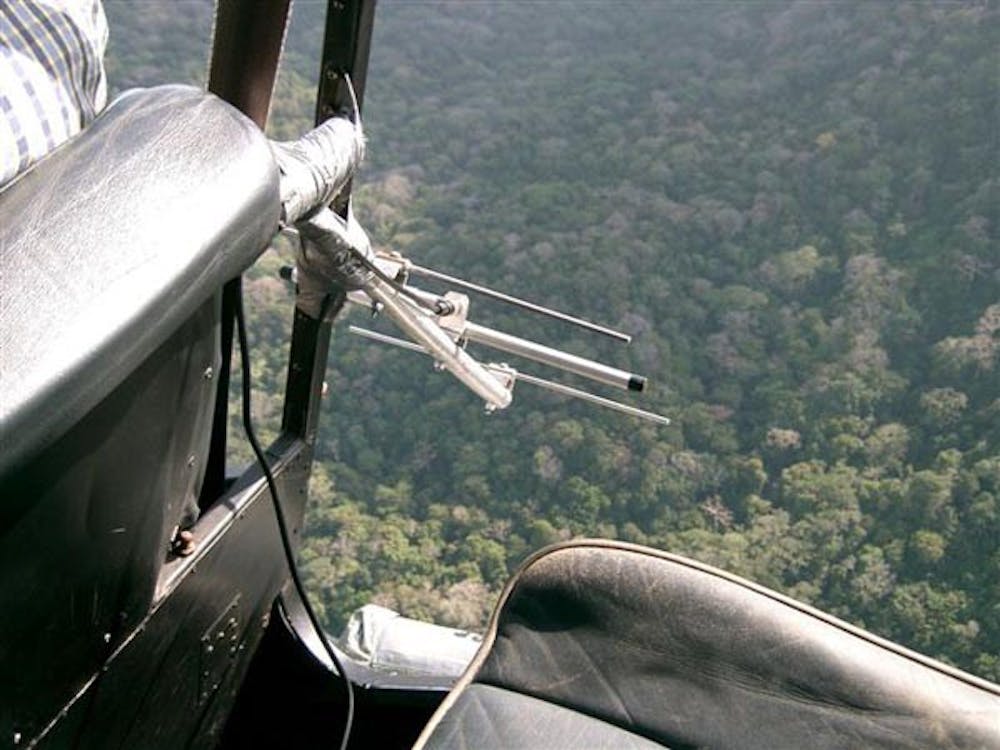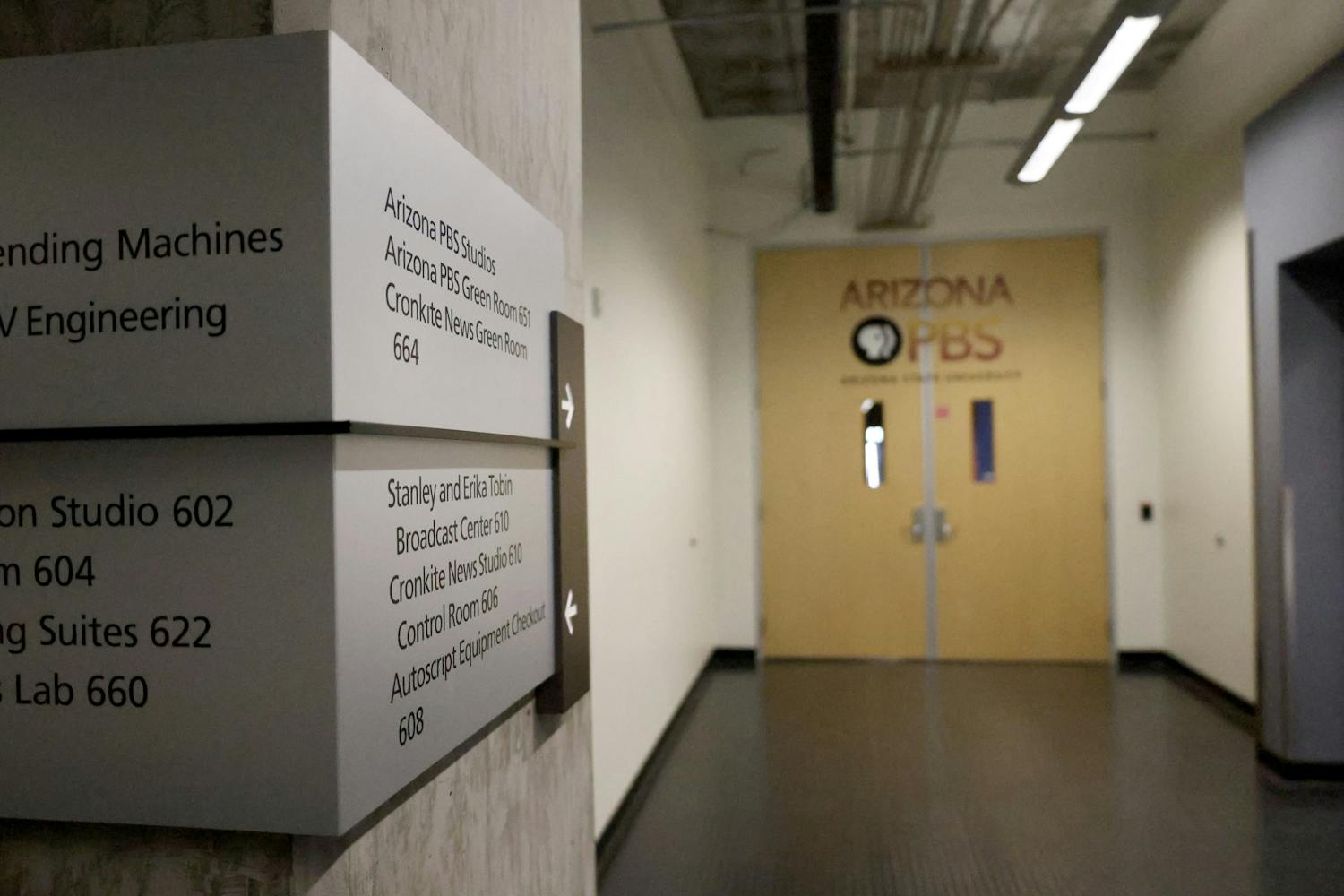Smithsonian scientists will soon slosh through troughs of jungle water in Panama while collaborating with students sitting in the Valley.
Eight ASU students will experience the biological wonders hidden within this tropic in real-time without even leaving the classroom with the help of a newly adopted telecommunication program known as Vidyo.
The technology, designed by Vidyo Inc., a technology company in New Jersey, was purchased by ASU as part of an educational and research partnership announced in February between ASU’s School of Life Sciences, the Smithsonian Tropical Research Institute and the Smithsonian Institution in Washington D.C.
The Vidyo Technology
“Vidyo is a very flexible telepresence system,” said Charles Kazilek, director of technology integration and outreach at the School of Life Sciences.
Robert Page, dean of the School of Life Sciences, said the Vidyo program is the front edge of video-conferencing technology and gives the appearance of a face-to-face interaction on any size computer.
“It’s more than doing Skype,” Kazilek said. “The quality is much better and you can have up to nine locations simultaneously interacting [on one screen].”
He said previous limitations for doing telepresence and video-conferencing are disappearing.
Kazilek said in the past, researchers have been constrained by expensive immobile equipment dedicated to a single area, similar to a point-to-point telecommunication technology system such as Cisco.
Now, researchers can participate in videoconferences wherever an Internet connection is accessible.
“With this technology we’re not tied to rooms anymore, we’re not even tied to buildings,” he said.
Kazilek said hardware was installed in ASU’s IT sector that facilitates the video coming in and going out.
“It allows us to install a very inexpensive client, even into a laptop, so that we can move this out into the jungle,” he said.
Page and Kazilek said there isn’t another telecommunications system as advanced or portable as Vidyo.
Page said approximately four months ago, ASU forged a partnership with Vidyo and invested $40,000 into the company’s technology.
He said the School of Life Sciences is hoping ASU’s University Technology Office will pick Vidyo up for the whole university.
“I think as a technology it could very easily go into every office on campus [and] in every [science] classroom,” Page said. “It’s so much better than Skype [and] if UTO bought into [Vidyo] … every student with a laptop, anywhere on campus, could be part of a huge conferencing network at a fraction of the cost of what we currently put into purchasing point-to-point video conferencing systems.”
“[Vidyo] is working quite successfully [but] it’s still in a pilot stage,” said Sharon Bushart, director of the University Technology Office at ASU’s Downtown campus.
Bushart said she couldn’t speculate on if ASU will adopt the Vidyo system for the entire university until extensive testing is complete.
“I won’t know until we do a little more testing and until we find out what type of impact Vidyo would have if more students were using it,” she said.
Vidyo in the Classroom
Within the past two weeks, eight ASU students and two University of Panama students have incorporated Vidyo conferences into ASU’s new fall semester course, “Current Topics in Tropical Biology.”
The initial full-fledged ASU-Smithsonian experiment will begin when the Vidyo system has been properly tested, and showcases the brilliantly blue and green Orchid Bee.
The Orchid Bee is being focused on because an ASU postdoctoral researcher, who is studying the Orchid Bee, was the first person from ASU to initiate a research interaction with staff researchers at the Smithsonian Tropical Research Institute in Panama, said Professor David Pearson, an instructor using the Vidyo equipment.
He said the first interactive in-class assessment of Vidyo took place two weeks ago and was for a Panamanian introduction.
“We interviewed a person down in Panama who will actually be with us when we take our graduate students down there in January, and in this case we used an introduction where he got to know students and they got to know him,” Pearson said.
He said learning the camp’s environment is normally something the 6 graduate and 2 advanced undergraduate students would do on the first day.
“Now we don’t have to spend the first day doing that, we’re already there,” Pearson said.
Pearson said the introduction is a way to cut out a lot of the learning time, so when students arrive they’ll be hitting the ground running.
Pearson said he plans to use the program to conduct interactive experiments in real time.
Pearson said student interaction between ASU and the University of Panama takes place on two stages.
“Panamanian students [will] look at what we do here in the desert, and our students [will] see what’s happening in the tropics,” Pearson said.
Kazilek said he hopes actively incorporating the Vidyo system into classrooms will raise the question, ”How can we change the way we teach [and] do our lectures in the future?”
He said Vidyo will create an opportunity for instructors to bring in-the-field scientists and researchers into the classroom in real time and have them interacting with students.
“We’re learning how to use it, and as with anything we probably don’t appreciate how it’s going to be used four or five years from now,” Pearson said. “But already we’re seeing it’s very effective and with some knowledge of what its limitations are, or what it can do, we are going to use it more and more.”
Pearson said there are three different levels of student-to-student interaction: graduate, undergraduate, and in the future, possibly high school.
One thing Kazilek and Pearson said they don’t want is an absence of interaction between students and researchers.
“We don’t want talking heads, we want interaction,” Kazilek said. “We want discussion and dialogue, that’s where it gets exciting.”
ASU’s Global Vidyo Classroom
Page said while he and Kazilek were designing the Panama project, they discovered the enabling capabilities of Vidyo and he became inspired to transform the global classroom to be an international global classroom.
Pearson said his goal with the Vidyo global classroom is to break down barriers of language, culture, economics and academics.
He said Vidyo will enlighten students and scientists by exposing why foreign researchers may have different goals and methods in tackling a project or problem.
“There is a lot of potential for undergraduate and graduate students to be interacting with researchers at the moment in Panama, but potentially around the world,” Kazilek said. “That’s where a global classroom comes in; we’re really not limited by anything anymore, as far as getting to other researchers in a rather exciting way.”
Page said the School of Life Sciences has been working to develop additional partnerships with Leuphana University in Lüneburg, Germany, and Sichuan University in Sichuan, China.
“The idea of this global classroom is one way to implement some of the curriculum reform initiatives that we’ve been working on, which have recently been published in Nature,” Page said.
Kazilek said an experimental project is underway within the ASU-Smithsonian partnership that will allow globally dispersed researchers and students alike to benefit from the data collected with the Vidyo technology.
“We’re also working with some undergraduate students that are [helping] researchers in Panama to [install] remote cameras that would feed live video people could use for research purposes,” he said.
This group of undergraduates is from the ASU association, Engineering Projects in Community Service, or EPICS.
EPICS is partnering with the School of Life Sciences and the Smithsonian Tropical Research Institute to develop a citizen based social science project, said ASU’s director of EPICS Richard Filley.
“ASU students, and later high school students across Arizona, can contribute to the research being done by ASU and by the Smithsonian in Panama,” Filley said.
He said the basic idea is to install high quality cameras in Panama that stream live video and can be parsed into 10 minute segments, which can then by coded by ASU students to explain the behavior of Orchid Bees.
“What this will do over time is build up thousands of data collection points that will help the researchers in Panama, and eventually here at ASU, understand the behavior of this bee,” Filley said.
He said EPICS has partnered with Hamilton High School in Chandler to discover how to get segment coding done at a high school level.
Filley said high school science students could participate in the experiment as a science project, and make science come alive by giving youth the opportunity to participate in research conducted by ASU and the Smithsonian, regardless of where the school is located.
“I think the only problem I’m going to have, which is a great problem, is everyone is going to want to participate,” Kazilek said.
Reach the reporter at tdmcknig@asu.edu





